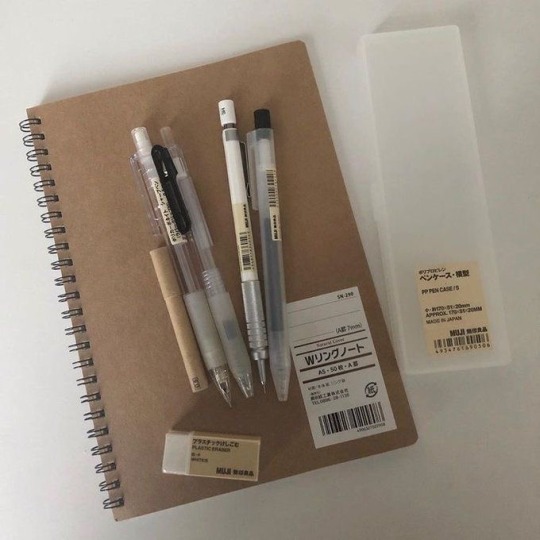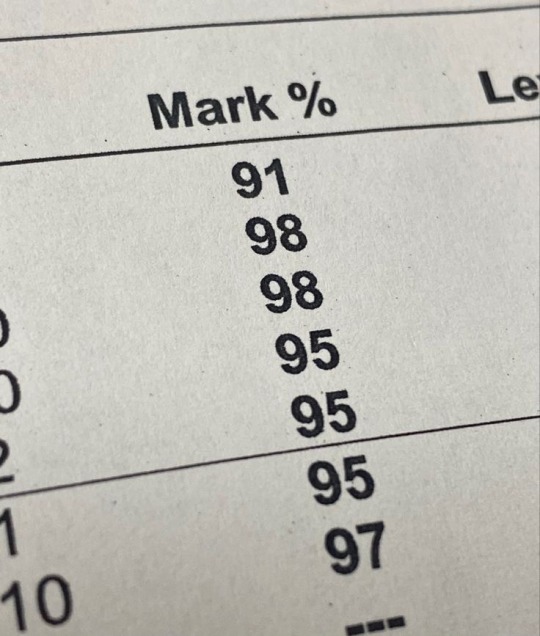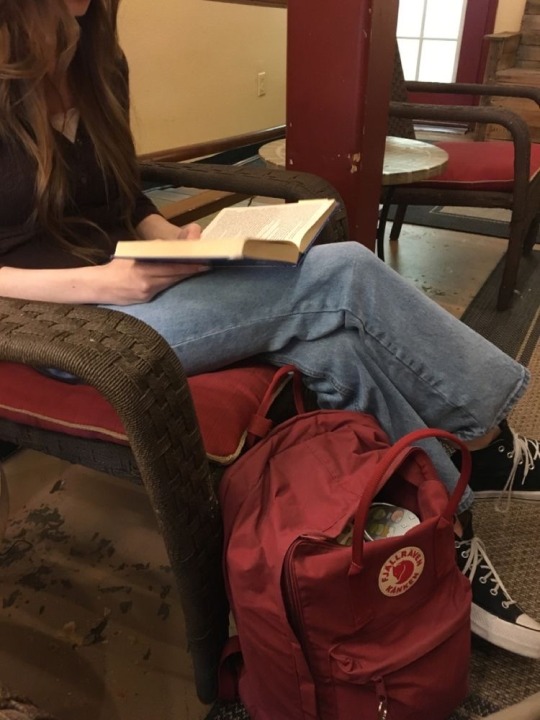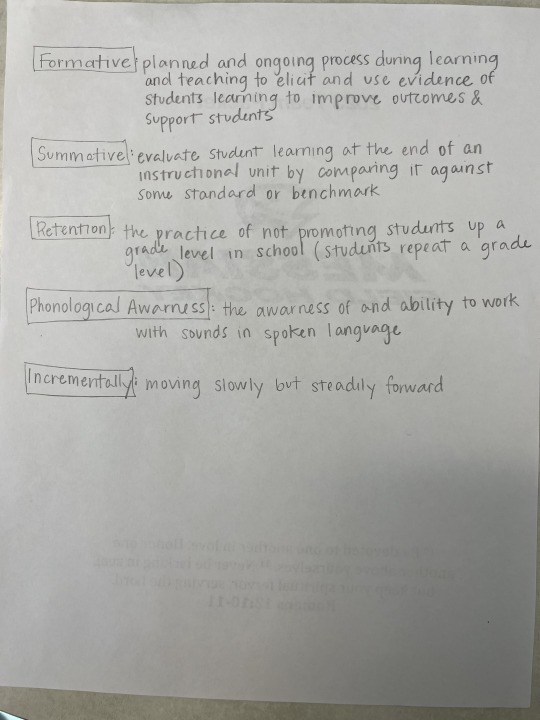#formative and summative assessments
Explore tagged Tumblr posts
Text
Listening to science teachers, NCSE Launches new Climate Change Story Shorts
Publisher: In-Sight Publishing Publisher Founding: September 1, 2014 Publisher Location: Fort Langley, Township of Langley, British Columbia, Canada Publication: Critical Science Newswire Original Link: https://ncse.ngo/listening-science-teachers-ncse-launches-new-climate-change-story-shorts Publication Date: July 31, 2024 Organization: National Center for Science Education Organization…
#1#2#3#4*#Climate Change Story Shorts#common misconceptions about climate change#flexible mini-units#formative and summative assessments#NGSS performance expectations#standards-aligned instructional storylines#teacher support resources#three-dimensional science instruction
0 notes
Text
Maximize Learning with Effective Assessments
Discover the power of formative and summative assessments in K-12 education! MagicBox™’s blog explores how these strategies can enhance learning outcomes, foster growth, and ensure comprehensive evaluations.
Learn actionable tips and see how technology can revolutionize assessments.
Read more: https://www.getmagicbox.com/blog/formative-summative-assessment-k12-education/
0 notes
Text
"I don't care how much power you have, it is fundamentally necessary and inarguable that we must provide accurate assessments to our students!"
This is a fake issue - No one is advocating for inaccurate assessment practices /on the basis of their inaccuracy/ - EVERY assessment system advocated for is advocated for ON THE BASIS OF ITS USE AND ACCURACY. you have to SAY WHAT MAKES ASSESSMENTS ACCURATE.
#this class is making me lose my mind#he also is claiming that there is such a thing as an Annual Standardized /formative/ assessment#nuh uh!#annual standardized assessments are summatives! there are NO annual standardized asssessments that are formatives
0 notes
Text
Planning Ahead
this is something i'm still working on, actually. keeping a visual log of everything i need to do has been really useful, but it's still a pretty new habit for me.
the issue is that i really, really hate taking the time to have those things be nice- because then i get unmotivated when the load gets heavy and i can't keep it that way. no cute advice, this is my planner for solely function.



SHORTHAND. i use shorthand for everything. a list of my favorites:
ESP - spanish, or FR - french (really works for any foreign language class)
ENG/ELA - english language arts
MT (math) - CALC (calculus) - PCLC (precalc) - STAT (statistics) - ALG (algebra) etc
GEO/HIS (geography or history)
SCI (science) - BIO (biology) - CHEM (chemistry) - FNS (forensics) - PHYS (physics)
GFX (graphic design) - DRM (drama) - HLC (healthcare) - BSN (business) etc... for whatever electives you have, lol
PJ (project)
HW (homework)
CFA/QZ (common formative assessment/quiz)
SD/SG (study/study guide)
PKT (packet)
SM (submit)
UG (ungraded)
SUM (summative)
FORM (formative)
PG _ (page _)
NSR/EC (not school related/extra curricular)
DNO (due night of)
DIC (due in class)
DEOC (due end of class)
i combine these for little nicknames like ESPPJ, MTPK, GFXPJ, etc. or DRM (info) NSR, GFXPKT EC
DESCRIPTION. i add a quick description of the item, just so i know what it is. usually just the actual assignment name or what it entails. if it's at home reading for english, it'll say "ENGHW Reading PG __-__". a drama script might say "DRM Script DEOC"
DATE. i always add the due date. i write it as a fraction so that it takes up a tiny bit less space. if i know, this is where the time it's due is added too.
URGENCY. i had another post about how i decide an assignment's urgency here, so i throw one of these numbers on the end.
DON'T CARE ABOUT CUTE! the point of this is to keep info. build the habit for a while, and once you have logging things as a habit, you can make it cute. but if you're already having trouble building the habit, adding more work will make it more difficult in my experience. always add onto your habits that already exist.
USE IT! i've also seen people have full planners that are so so cute and then just. never use them??? you're making this so that you have a way to keep track. making it, and then just throwing it in your bag to not be seen until tomorrow is defeating the point. use what you made.

images from pin 📌 - search white study aesthetic
#study blog#it girl#studyblr#that girl#study motivation#studyspo#wonyoungism#dark academia#academia#chaotic academia#study notes#study tips#studying#academic#academics#light academia#planner
60 notes
·
View notes
Text
Oxford University Results: Excellence in Academia
The University of Oxford, installed in 1096, is one of the oldest and most prestigious institutions of better learning in the world. With recognition for academic rigor, groundbreaking research, and excellent alumni, Oxford’s exam results are an essential measure of its academic fulfillment and the overall performance of its students.

Oxford University Result
The Importance of Oxford University Results
Oxford University's consequences are more than just numbers or grades; they're a testament to the college's commitment to excellence. They replicate the organization’s adherence to excessive educational standards and the dedication of its students to reach one of the most challenging instructional environments in the international.
For college students, the results constitute the culmination of rigorous study, highbrow boom, and the potential to suppose significantly and creatively. For the university, these effects uphold its popularity as an international leader in training. Employers, academic institutions, and governments around the arena apprehend Oxford’s effects as a benchmark of instructional distinction.
The Grading System at Oxford
Oxford University follows a traditional diploma category system for undergraduate guides. It is distinctively rigorous, designed to project college students to reach their complete capability.
First-Class Honours (First)
The highest level of success, is normally offered to students who exhibit splendid understanding, originality, and analytical capabilities.
Upper Second-Class Honours (2:1)
A strong overall performance indicates thorough expertise and competency within the concern.
Lower Second-Class Honours (2:2)
Satisfactory paintings with room for improvement in important analysis and depth.
Third-Class Honours (Third)
A bypass, although considered much less aggressive.
Pass and Fail
A pass denotes ok performance to satisfy minimum educational requirements. Failing a paper or a whole examination could have massive implications, often requiring a re-exam.
Graduate packages frequently rent difference, merit, and pass classifications. Distinctions are reserved for exquisite work, while deserves and passes mirror varying ranges of competence.
The Examination Process
Oxford's exam manner is famed for its depth. Students take each formative and summative assessment at some point in their academic journey. Formative tests are designed to assist students perceive regions of development, while summative tests make contributions directly to their very last grades.
Tutorials and Assignments
Tutorials shape the backbone of Oxford’s coaching technique. Students publish weekly essays or hassle sets, receiving feedback that prepares them for their very last checks.
Preliminary and Final Examinations
Most undergraduate students sit down for Prelims or Mods (moderations) at the cease of their first 12 months. These checks are designed to evaluate foundational information.
Final tests, called Final Honours Schools (FHS), determine the degree type. Typically held at the end of the third or fourth year, these checks frequently cover a huge range of topics studied for the duration of the course.
Examination Timetable
Oxford’s examination schedules are meticulously deliberate. Students are informed of their schedules well earlier, allowing them to put them together efficiently.
Assessment for Graduate Students
Graduate courses frequently consist of coursework, projects, and dissertations similar to exams. Research college students are assessed through progress reports, viva voce (oral examinations), and thesis submissions.
Accessibility and Fairness
Oxford University is devoted to ensuring that its examinations are fair, obvious, and handy to all. The university has delivered several measures to assist students with various wishes:
Special Examination Arrangements
Students with disabilities, persistent ailments, or intellectual health demanding situations can request affordable changes, including greater time, alternative formats, or rest breaks.
Anonymous Marking
To ensure impartiality, most assessments are marked anonymously. Examiners become aware of students by their candidate numbers in preference to their names.
Mitigating Circumstances
Students dealing with unforeseen demanding situations, inclusive of illness or their own family emergencies, can publish mitigating situations to examination boards for consideration.
Release of Results
Oxford University effects are generally launched online via the university’s secure platform. For undergraduates, preliminary exam outcomes are released within the summer season, even as the very last consequences are announced later in the year. Graduate college students often get hold of their results on a rolling foundation, relying on the character of their applications.
Notification
Students are notified through email whilst their results are to be had. They can get admission to their grades through the usage of their student accounts.
Provisional and Final Results
Provisional effects may be launched before respectable affirmation. Final consequences are tested through the college’s Examination Schools and exam forums.
Implications of the Results
The outcomes from Oxford University have a ways-attaining implications for students and their destiny prospects:
Career Opportunities
Employers fee the intellectual rigor and area that Oxford graduates deliver to the administrative center. A First or 2:1 is frequently seen as a minimum requirement for competitive graduate schemes and roles.
Further Studies
Many students use their consequences to stable places in prestigious postgraduate programs, each at Oxford and other institutions international.
Academic Honors and Prizes
High-acting college students may additionally get hold of educational prizes, scholarships, or invites to enroll in prestigious societies just like the Oxford Union.
Resits and Appeals
Students who fail to fulfill the specified requirements may be allowed to resit their tests. The college has a strong appeal method for college kids who trust their outcomes have been unfairly determined.
Celebrating Academic Success
Oxford’s outcomes are celebrated no longer most effectively by using college students and their families but additionally using the wider academic community. Graduates frequently mirror on their trips with giant pleasure, understanding they have accomplished something definitely incredible.
Graduation Ceremonies
Once effects are finalized, a success candidates attend formal graduation ceremonies at the historic Sheldonian Theatre. These ceremonies are steeped in culture, with students donning academic regalia to obtain their stages.
Alumni Achievements
Many Oxford alumni have gone on to make significant contributions in numerous fields, including politics, technology, literature, and enterprise. Their achievements continue to inspire modern-day and future college students.
Challenges and Future Prospects
While Oxford University's effects are synonymous with excellence, they also replicate the giant strain faced by students. The college is operating to deal with issues such as mental fitness, burnout, and the need for a supportive educational environment.
Well-being Initiatives
Oxford offers counseling, pressure management workshops, and peer support corporations to help students navigate academically demanding situations.
Innovations in Assessment
The university is exploring opportunity strategies of evaluation, together with open-book assessments and continuous assessment, to reduce undue strain and enhance knowledge of outcomes.
Global Recognition
As Oxford continues to draw pinnacle skills from around the arena, its outcomes stay a benchmark of worldwide educational excellence.
2 notes
·
View notes
Text
Common Game Assessments

Common game assessments are Quizizz, Kahoot!, Gimkit, and Blooket. These are good for checking for understanding, recall, review. A lot of the time these are for formative assessment pieces. However, during COVID’s distance learning, a lot of these also got switched into summative assessments because we weren’t in person with students. These were tools that students already knew and then just turned into tests and quizzes, just like self-grading Google Forms. In my experience, when we returned to the building, we still weren’t allowed to share materials (so no paper passed back and forth), so these tools still held their place as all forms of assessment. Even now, I know people who will still use these as summative assessment tools because they can grade themselves and give so much more data on students than a paper/pencil test.
3 notes
·
View notes
Text
The Role of Essays in Academic and Professional Settings
Essays hold a central position in both academic and professional landscapes, functioning as potent tools for assessment, communication, and the cultivation of critical skills. Their significance extends across diverse domains, with essays serving as multifaceted instruments that encapsulate knowledge and ideas while promoting the development of essential competencies.
1. Assessment and Critical Thinking in Academia:
Within the academic realm, essays play a pivotal role in assessing students' comprehension of specific subjects and their capacity for critical thought. These written assignments encompass a wide array of formats, including research papers, argumentative essays, and literary analyses. The primary objective behind these assignments is to not only demonstrate a student's grasp of the subject matter but also to present compelling evidence to support their perspectives.
2. Skill Refinement in Writing:
Beyond the confines of the classroom, essays play a crucial role in honing the writing skills that are indispensable in various professional contexts. Proficiency in effective written communication is a prerequisite for success in numerous careers, and essays provide an arena for individuals to refine this competency. Constructive feedback garnered from these endeavors propels iterative enhancements, fostering the parallel growth of writing prowess and the ability to think critically.
3. Communication and Persuasion in the Professional Arena:
As individuals traverse into the professional sphere, essays emerge as invaluable instruments for disseminating ideas, conveying intricate information, and persuading stakeholders. In the realm of business, essays find application in articulating concepts and proposals to colleagues and clients alike. These documents take on diverse forms, encompassing business plans, project proposals, and white papers. Their fundamental purpose is to influence readers toward specific courses of action or to supply the necessary information for informed decision-making processes.
4. Essays in Legal, Medical, and Summative Roles:
Moreover, essays assume a significant role in specific professional contexts, such as the legal and medical fields. In the legal domain, essays take on the responsibility of conveying compelling legal arguments, advocating viewpoints, and ultimately influencing judicial outcomes. Similarly, within the medical sphere, essays are employed to communicate groundbreaking research findings, educate peers about emerging medical interventions, and elucidate intricate procedures.
In conclusion, the influence of essays is undeniable across both academic and professional spheres. They fulfill a multitude of roles, ranging from evaluating student comprehension and critical thinking capacities in academia to honing the writing skills crucial for success across diverse professional trajectories. Concurrently, essays serve as potent vehicles for communicating intricate concepts, endorsing propositions, and persuading audiences, thereby elevating the effectiveness of communication within varied domains.




#exam stress#student#college life#study#studying#college#university#student life#study space#study hard#essay help#essay writing#writing#professional writing services online#law essay help
6 notes
·
View notes
Text
Week 1: 8/21 - 8/25
This is Balanced Literacy, Chapter 9: Assessment and Intervention in the Balanced Literacy Classroom
Big Takeaway: Assessing our students in a variety of ways is important because it allows us to know what different interventions are needed in a variety of areas in literacy.
Nugget: Holding students back in younger grades is a “strong predictor of dropping out in high school” (Fisher, 2020)
Readerly Habit: Explore relationships with other people through reading by using texts as a shared experience with another person/other people or to gain insight into the perspective of another person
Task: Choose an excerpt from your assigned course reading(s) and share with a friend in another major to get his or her insight and perspective on it.
Response:
This was a very interesting conversation to have with my roommate. For me, it was very eye opening to see how little other majors know about the world of education. Not that I expected her to know much, but there were certain things I felt were obvious that I had to take time to clarify for her. For example, I had to tell her how assessments could be either formative or summative - how the word assessment did not always mean taking a test. As a nursing major, this was not something she would naturally think, but as an education major, this was second nature to me. Our conversation happened after I read through the text and picked out a section on RTI to read and explain to her. Then, we sat and talked through the different pieces of RTI and how assessments are used to help track students and their growth. This was something I found to help me understand how to better approach parents about their students' progress and what might need more explanation. Also, I feel more confident in my knowledge about literacy RTI because I was able to explain it to my roommate in a way she could understand it as someone who has little experience with RTI. Overall, I feel like it was a good conversation, and I think I would like to continue having more conversations like this, so I can be more prepared to talk with parents who do not have a background in education.

This is my roommate and I. We tend to spend a lot of time talking about our different majors and the difficulties in the fields we plan to go into. We are both so passionate about our fields and love having deep conversations, which is why she was the perfect person to talk to about my excerpt.
3 notes
·
View notes
Text
Readerly Exploration #2
due date: 8/21
Chapter 9: Assessment and Intervention in the Balanced Literacy Classroom
Big Take away: I think the big take away is that it is important to test your students on what they learned at the end of the chapter or year or whatever it may be, but it is equally if not more important to see where your students are along the way. If interventions need to take place, if they are ahead of the game and gauge your plans based on that.
Nugget: I loved the quote that said, "A formative assessment is when the cook tastes his own soup, a summative assessment is when the guests taste the soup" This made so much sense to me as far as what each term really means. formative is to help the learning and see if changes need to be made, summative is to see what was learned and where they are at now.
Activity: Identifying unknown vocabulary words and looking them up before I read.

2 notes
·
View notes
Text
CBSE vs ICSE vs State Board: What’s Best for Your Child?

As a senior CBSE school professor based in Pune, I've often been approached by concerned parents asking a very crucial question: "Which board is best for my child's future?" It’s a valid concern, especially in today’s dynamic academic environment where each education board in India offers a unique learning pathway. Whether you're based in Pune or anywhere across India, understanding the differences between CBSE, ICSE, and State Boards is vital in making the right choice for your child.
Let me take you through a comprehensive comparison, not just based on curriculum structure, but also on real-world applicability, career trajectory, teaching methodology, and overall development.
Understanding the Basics: What Are CBSE, ICSE, and State Boards?
The Central Board of Secondary Education (CBSE) is one of the most recognized and preferred boards across India. It is governed by the Union Government and follows the National Council of Educational Research and Training (NCERT) curriculum. CBSE is known for its structured and concise syllabus that caters to students preparing for national-level competitive exams like JEE, NEET, and CUET.
The Indian Certificate of Secondary Education (ICSE), managed by the Council for the Indian School Certificate Examinations (CISCE), offers a rich and diverse curriculum. It places a strong emphasis on English language skills and literature, along with a comprehensive approach to arts, science, and humanities.
State Boards, such as the Maharashtra State Board of Secondary and Higher Secondary Education (MSBSHSE), are designed to cater to local educational needs. These boards follow region-specific syllabi and usually offer instruction in the state's native language alongside English.
Curriculum Comparison: Breadth vs Depth
CBSE's curriculum is designed to provide students with clear foundational concepts. Its focus on Science and Mathematics is particularly helpful for students aiming for STEM fields. The syllabus is streamlined and keeps the needs of national entrance exams in mind.
ICSE offers an in-depth curriculum that covers a wide range of subjects, including environmental education, arts, and humanities. This makes the board ideal for students interested in pursuing fields such as journalism, law, literature, and management.
State Boards often prioritize local languages and cultural elements. Though perceived as less rigorous, the state board curriculum enables students to stay connected with their roots while still acquiring essential academic skills.
Language and Medium of Instruction
CBSE offers bilingual instruction in both English and Hindi, ensuring accessibility to students from different linguistic backgrounds. However, there's a rising trend of CBSE schools focusing more on English fluency.
ICSE uses English as its primary medium of instruction, which not only enhances communication skills but also gives students an edge in international exams like IELTS and TOEFL.
State Boards, including the Maharashtra Board, offer instruction primarily in the regional language along with English. This helps students strengthen their command over their mother tongue, which can be advantageous in state-level government jobs and civil services.
Examination and Assessment Patterns
CBSE employs a combination of formative and summative assessments under the Continuous and Comprehensive Evaluation (CCE) system. This includes objective-type questions and MCQs that train students for time-bound competitive tests.
ICSE examinations focus heavily on written and project-based assessments. Students are encouraged to think critically and present structured answers, which builds their analytical skills and writing capabilities.
While many State Boards are adopting reforms post-NEP 2020, the traditional annual exam model still persists. However, internal assessments are slowly gaining importance in most state education systems.
Preparation for Competitive Exams
Being aligned with NCERT books, CBSE students find themselves well-prepared for entrance exams like JEE, NEET, CUET, and more. This is one of the key reasons why many parents choose CBSE for their children aiming for engineering, medicine, or central universities.
ICSE students may require additional coaching for entrance exams, but they possess superior communication, comprehension, and writing skills that benefit them in courses such as law, management, and design.
Students from State Boards often need supplemental coaching to match the rigor of national-level exams, but they possess strong grounding in local civics, languages, and history.
Global Recognition and Further Education
CBSE enjoys wide acceptance in international universities, particularly because of its consistent academic standards. Its focus on STEM and uniform curriculum makes transitions abroad smoother for students.
ICSE is highly regarded for its English fluency and holistic education, making it a favourable choice for students applying to universities in the UK, USA, Canada, and Australia.
State Boards may be lesser known internationally but with strong academic records and supplementary credentials like SATs or IELTS, students can still secure global admissions.
Pedagogy and Teaching Methods
CBSE schools often use smart classrooms, activity-based learning, and digital modules. There is a growing focus on STEM projects, critical thinking, and skill-based learning in line with NEP 2020.
ICSE pedagogy encourages project work, field visits, and lab experiments. The integration of subjects and focus on creativity supports all-round development.
Many State Boards are now shifting towards experiential learning, thanks to policy reforms. However, many schools still rely on lecture-based teaching and rote learning practices.
Cost and Accessibility
CBSE schools like Suryadatta National School offer a perfect blend of affordability and quality. These schools are accessible across India, making it easier for families to maintain continuity in case of relocation.
ICSE schools, while delivering premium education, often come with higher fees and are fewer in number.
State Boards remain the most accessible option for rural and economically underprivileged families.
My Experience: Why I Recommend CBSE
Having been part of the CBSE education ecosystem for decades, I can confidently say that CBSE provides a forward-thinking, future-ready curriculum that equips students not just for exams, but for life. The emphasis on conceptual understanding, problem-solving, and digital fluency sets our students apart.
At Suryadatta National School, we amplify this advantage by fostering an inclusive learning environment that goes beyond textbooks. We nurture curiosity, innovation, empathy, and leadership.
It’s no coincidence that our institution has been ranked 1st in Academic Excellence by Pune Times Mirror Top Schools May 2021, awarded the Best CBSE School in Pune, Maharashtra by Eminent Research Brand IQ, and ranked 2nd in National Curriculum by Times School Survey 2021 Pune. These accolades are a reflection of our commitment to excellence.
Final Thoughts: Which Board Is the Best Fit for Your Child?
Ultimately, no board is superior in absolute terms. The right choice depends on your child’s learning style, aspirations, and the kind of opportunities you want them to access.
If your child is aiming for competitive exams and values a structured academic approach, CBSE is a wise choice. If your child has an inclination towards language, arts, and interdisciplinary subjects, ICSE might be more suitable. For those who prefer cost-effective education with a strong regional focus, the State Board can be a valuable option.
What truly matters is the school’s ethos, faculty quality, infrastructure, and commitment to nurturing every child’s potential.
Ready to Make the Right Choice?
If you’re looking for a future-focused, well-rounded CBSE education in Pune, look no further than Suryadatta National School. With our award-winning curriculum and student-first philosophy, we’re helping young minds discover their full potential every single day.
0 notes
Text




Week 6: Presentation/Formative Assessment
Week 6 Presentations for formative assessment - As shown in the presentation, I have used a range of photo's that have different background/themes such as nature & natural lighting-based photos and studio lighting photos.
Critical feedback that was given to me was to create a cohesive series of photographs (such as photographs that have a connected theme) rather than scattered photographs that don't have a particular theme, which I will take into thought when creating work for my summative assessment.


As shown in the presentation, these are self-portraits I conducted, with the use of a tripod and the reflection off a window. When conducting a photoshoot for images that I plan to use for the self-portrait, for the first half of images (which needed a tripod), I took inspiration from Dylan Andrew's photography style, which he uses shadows onto his subjects and is very unique in the way he uses it.
For the mirrored/window portraits, my inspiration comes from Lee Friedlander and Vivian Maier, who uses their creativity into creating work with resources that are surrounded by them, such as the reflection of windows. I've used their works as an inspiration to my own self-portraits, by the use of bus windows and AUT windows as well - which is me making use of my surroundings while at campus.
When capturing in the future, I hope to get the exposure on the right setting, so my figure can visibly be shown in the reflection and to choose a setting/window that doesn't have too much of a reflection that can cause other things may add as a distraction.
0 notes
Text
How Instructional Design Services Elevate Learning Experiences in the Modern Era
In today’s fast-paced digital world, organizations, educational institutions, and training companies are turning to expert instructional design services to craft impactful learning experiences. As learners’ expectations evolve, traditional teaching methods no longer meet the demand for engagement and retention. Instructional design bridges this gap with strategic, learner-centered content creation.

What Are Instructional Design Services?
Instructional design services involve analyzing learner needs, defining learning objectives, and developing content that aligns with those goals. This process uses a systematic approach, often based on models like ADDIE (Analyze, Design, Develop, Implement, Evaluate), to ensure every element of the learning program serves a purpose.
From storyboarding and scriptwriting to visual design and assessments, instructional designers apply educational theory and real-world practicality to deliver meaningful learning outcomes.
Explore more at 42 Design Square.
The Role of Curriculum Design Services
A core component of instructional design is curriculum design — a structured plan for delivering knowledge and skills over time. Curriculum design services go beyond one-time training programs. They focus on developing comprehensive learning paths that guide learners from foundational understanding to mastery.
Effective curriculum design involves:
Structuring courses for progressive learning
Aligning learning outcomes with organizational or academic goals
Incorporating diverse media like videos, infographics, and simulations
Embedding formative and summative assessments
When done right, a well-designed curriculum improves learner satisfaction and drives higher completion and success rates.
Why Educational Design Services Matter
Educational design services extend instructional design principles to broader learning systems, including K-12, higher education, vocational training, and eLearning platforms. These services combine pedagogy, technology, and creativity to create inclusive, accessible, and high-impact educational environments.
Benefits of professional educational design include:
Better alignment of content with diverse learning styles
Use of gamification, storytelling, and interactive elements
Scalability across different learning formats — from mobile to desktop
Accessibility features for learners with disabilities
As education increasingly moves online and across borders, educational design services ensure learning remains relevant, inclusive, and future-ready.
Why Your Organization Needs Expert Instructional Designers
Partnering with a professional instructional design agency like 42 Design Square offers several advantages:
Customized Solutions: Tailored learning strategies that reflect your industry, audience, and objectives.
Improved Engagement: Visually appealing, interactive content that keeps learners motivated.
Faster Deployment: Agile design methods mean quicker turnaround for training needs.
Higher ROI: Better learning outcomes translate to improved performance and retention.
Whether you’re developing corporate training, compliance modules, or digital courses, instructional designers play a critical role in ensuring your learning programs are not only informative but also transformational.
Final Thoughts
As the learning landscape becomes more complex and technology-driven, relying on traditional methods won’t cut it. Investing in instructional design services, curriculum design services, and educational design services ensures your training or education programs remain effective, efficient, and aligned with the needs of modern learners.
From content mapping to interactive courseware, 42 Design Square helps organizations across industries build impactful learning experiences that drive real results.
Ready to redesign your learning strategy? It starts with strong instructional design.
0 notes
Text
Mastering the Art of Teaching CNA Classes: Essential Tips for Success
Mastering the Art of Teaching CNA Classes: Essential Tips for Success
Teaching Certified Nursing Assistant (CNA) classes is not only a rewarding experience but also a vital contribution to the healthcare workforce. As an instructor, having the right strategies and techniques can make a meaningful difference in the quality of education you provide to your students. This article will explore essential tips for mastering the art of teaching CNA classes, ensuring both your success and that of your students.
Why Teaching CNA Classes is Crucial
The demand for skilled CNAs continues to grow, making it crucial for instructors to prepare the next generation effectively. By understanding the key components of teaching and engaging students, you will enhance learning outcomes, create a positive classroom environment, and contribute to better patient care in healthcare facilities.
Benefits of Effective CNA Instruction
Improved Student Engagement: A well-structured approach to teaching encourages participation and enthusiasm.
Higher Pass Rates: Students who are better prepared are more likely to pass certification exams.
stronger Healthcare Workforce: Quality training translates to competent and confident CNAs.
Job Satisfaction: Instructors who see their students succeed often experience greater professional fulfillment.
Essential Tips for Teaching CNA classes
1. Understand the Curriculum
Familiarize yourself with the CNA training curriculum requirements. this usually includes both theoretical knowledge and practical skills. Your ability to navigate and teach these elements is critical to student success.
2. create a Structured Lesson Plan
A lesson plan serves as a roadmap for your classes. Structure your lessons to include:
Learning objectives
Course materials and resources
Teaching methods (lectures, discussions, hands-on practice)
Assessment strategies
3. Incorporate Hands-On Training
CNA training heavily emphasizes practical skills. Ensure your students receive adequate opportunities to practice skills such as:
Patient care techniques
Basic nursing skills (e.g., taking vital signs)
Communication skills with patients and families
Using simulation labs can enhance these experiences, making learning realistic and effective.
4. Foster an Inclusive Learning Environment
Every student learns differently. Foster a classroom culture that encourages questions, collaboration, and respect. Consider the following:
Encourage peer-to-peer learning
Provide additional support for students who may need it
Value diverse perspectives and experiences
5. Use Technology Wisely
Taking advantage of modern technology can enrich your teaching. Consider using:
Online resources for supplemental learning
Interactive tools for teaching, such as quizzes and discussion forums
Video demonstrations of procedures
6. Assess and Adapt
Regular assessment helps identify areas where students excel or struggle. Use both formative (ongoing) and summative (end of course) assessments to gauge understanding and adapt your teaching strategies accordingly.
7. Build Relationships with Students
Taking the time to know your students can greatly enhance their learning experience. Establish mentorship by being approachable and supportive, and encourage open communication.
Practical Tips for Success in the Classroom
Stay Up-to-Date: Ensure you remain current with the latest healthcare practices and regulatory changes.
Encourage Real-Life Experiences: Where possible, invite guest speakers who are active CNAs to offer real insights.
Practice With Real-Life Scenarios: use case studies that simulate real patient care situations to develop critical thinking.
Case Study: A Successful CNA Program
Program Feature
Description
Success Rates
Hands-On Training
Students participate in real-world environments, practicing essential skills.
95% Passed State certification
Mentorship Program
Experienced CNAs mentor each student, providing firsthand insights.
88% Job Placement Rate
Incorporation of Technology
Online simulations helped students learn procedures effectively.
93% Learner Satisfaction
First-Hand Experience: A Teacher’s Journey
As an instructor with over five years of experience,I have seen firsthand the impact of quality CNA training. my first class was met with mixed emotions; students where nervous yet excited. I took the time to build rapport and establish trust. By incorporating group activities and shared learning experiences, I noticed a considerable betterment in their engagement levels. Most notably, our class had a 100% pass rate on the certification exam!
Conclusion
Mastering the art of teaching CNA classes requires dedication, passion, and the right strategies. By implementing these essential tips, you can create a dynamic learning environment that fosters student success and prepares them for their vital roles in healthcare. Embrace the journey of teaching, and remember: the impact you have on your students extends beyond the classroom, shaping the future of healthcare one CNA at a time.
youtube
https://cnacertificationprogram.net/mastering-the-art-of-teaching-cna-classes-essential-tips-for-success/
0 notes
Text
The Advantages of CBSE Affiliation and the Day Boarding Experience in Sonipat's Top Schools
Sonipat’s educational landscape in India evolves continuously. It offers parents and guardians with plenty of choices for the admission of their children to diverse schools. CBSE affiliated school in Sonepat and day boarding school in Sonepat have recently proved to be outstanding options among other types of institutions. Each type of school provides diverse benefits. Parents looking for the best option must understand the key aspects or nuances of their affiliations and education model to make informed decisions aligning with the family needs and learning style of their kids.
The Central Board of Secondary Education (CBSE) is a widely recognized national education board in India, known for its structured curriculum, comprehensive evaluation system, and emphasis on holistic development. Choosing a CBSE affiliated school in Sonepat offers several key benefits.

Firstly, the CBSE curriculum is designed to provide a strong academic foundation across various subjects, preparing students effectively for higher education and competitive examinations such as NEET and JEE. The syllabus is regularly updated to incorporate contemporary knowledge and pedagogical approaches, ensuring that students are equipped with relevant skills for the 21st century.
Secondly, the CBSE's continuous and comprehensive evaluation (CCE) system focuses on assessing students' progress throughout the academic year through a combination of formative and summative assessments, reducing the pressure of high-stakes end-of-year examinations and promoting a more consistent learning process.
Thirdly, the nationwide recognition of the CBSE curriculum ensures a seamless transition for students who may need to relocate to different parts of India. Moreover, CBSE affiliated school in Sonepat often adhere to certain standards of infrastructure and teacher qualifications, providing a baseline level of quality assurance.
When evaluating a CBSE affiliated school in Sonepat, it's important to delve deeper into the school's specific teaching methodologies, the support provided for students with varying learning needs, and the availability of resources to enhance the learning experience beyond the prescribed syllabus.
The best school in Sonipat with CBSE affiliation will not only follow the curriculum but also enrich it with innovative teaching practices and a focus on developing critical thinking and problem-solving skills.
In addition to the choice of educational board, the type of schooling – day school versus day boarding – is another significant consideration. A day boarding school in Sonepat offers a unique educational model that extends the school day beyond the traditional hours.
Students in a day boarding school in Sonepat typically engage in supervised study sessions, participate in a wider range of co-curricular activities, and may even have meals provided at school. This extended engagement offers numerous advantages for students' academic and personal growth.
The supervised study hours provide dedicated time for students to complete homework and revise lessons under the guidance of teachers, fostering better understanding and reducing the academic burden at home. The longer school day allows for a more comprehensive participation in sports, arts, music, and other extracurricular activities, enabling students to explore their interests, develop their talents, and develop life skills.
For parents, a day boarding school in Sonepat can be a convenient option, providing a structured and enriching environment for their children for a longer duration each day, especially beneficial for working parents. The extended time spent in the school environment can also foster stronger bonds between students and teachers, creating a more supportive and collaborative learning community.
When considering a day boarding school in Sonepat, it's crucial to inquire about the specific daily schedule, the nature and quality of the co-curricular activities offered, the provisions for meals and breaks, and the transportation arrangements. The best school in Sonipat offering a day boarding program will ensure a well-balanced and engaging experience that caters to the holistic development of each student.
Ultimately, the quest for the best school in Sonipat involves a careful evaluation of various factors, with CBSE affiliation and the day boarding model being significant aspects to consider. A CBSE affiliated school in Sonepat provides a strong academic framework and national recognition, while a day boarding school in Sonepat offers an extended learning experience with enhanced academic support and co-curricular opportunities.
The ideal choice will depend on the individual needs and learning style of the child, as well as the preferences and circumstances of the family. By understanding the benefits of CBSE affiliation and the day boarding experience, parents in Sonipat can make a well-informed decision that sets their child on the path to academic excellence and overall well-being.
0 notes
Text
Understanding the Different Types and Their Purposes When Evaluate
Understanding the Different Types and Their Purposes When Evaluate - The purpose of this section is to provide a complete overview of the various types of assessments that are available to educators and evaluators. It goes beyond a surface-level understanding to delve into the precise goals that each assessment serves, stressing the fact that effective evaluation is dependent on picking the suitable instrument for the aim that is being pursued.

In this article, we investigate a wide range of assessment approaches, ranging from formative and summative to diagnostic and performance-based, and we describe the distinctive qualities of each of these methodologies as well as the specific insights they provide. In order to ensure that the selected assessment accurately measures what it is intended to measure, provides data that can be acted upon, and ultimately contributes to meaningful improvements in learning, programs, or interventions, the focus is on providing readers with the knowledge necessary to make informed decisions when planning evaluations. For any evaluation method to be successful, it is essential to have a solid understanding of these intricacies.

Navigating to Effective Evaluation
There are many different kinds of evaluations that can be employed, each with their own distinct goals and results. For the purpose of evaluating student learning, performance, and attitudes, this section provides a concise description of the most important methodologies and tools. The following types of assessments are included in this category: formative assessments, summative assessments, traditional assessments, alternative assessments, ipsative assessments, diagnostic assessments, dynamic assessments, and criterion-referenced assessments.
The purpose of a formative assessment is to provide feedback to both students and teachers on actions that are connected to learning. This feedback is provided throughout the instruction process. In most cases, formative evaluations are not graded and have a relatively low level of importance; however, the feedback that is obtained may be either favourable or negative. It is possible to classify a formative assessment as a low-stakes evaluation that can be carried out at any moment in the classroom in order to gain a feel of how well kids are learning. Assessments that are considered formative can take many different forms, including but not limited to: small-group conversations, think-pair-share, tiny written or spoken summaries of knowledge obtained, small group rehearsals, and quizzes developed by the students themselves.

The objective of a summative assessment is to evaluate rather than to describe, and it is often utilised for the purpose of grading as well as for the purpose of credentialing certification. Evaluations that are considered to be summative are often administered at the end of a unit or course. Summative evaluations are usually conducted by organisations that are not directly under the authority or influence of the institution. These evaluations are frequently conducted on highly ranked educational programs, institutions, and degree candidates. As an illustration, standardised tests are examples of summative assessments. In addition, the nature of the admission and qualifying examinations is that they are summative. In addition, summative evaluations include terminal examinations for the purpose of obtaining a license or certification, as well as graduation from degree programs.

Choosing the Right Purposes and Practical Applications
A sophisticated measurement and evaluation of the effectiveness of teaching tactics is made possible by the use of models, the comprehension of fundamental concepts, and the differentiation of outcomes into lower and higher order levels and levels of differentiation. Assessment is not limited to merely identifying the content that has been taught; rather, it can also serve as a formative process for the purpose of enhancing learning. Having an understanding of the fundamental principles that underpin any field of research makes it possible to conduct fascinating evaluations. These evaluations can range from recognising the principle in a particular case to making use of the concept in unexpected scenarios or investigating the ramifications of the principle.
On the subject of test selection and test development, there is a vast body of published material. The most important thing to keep in mind is that assessment and evaluation should not be used solely for the purpose of establishing norms or ensuring responsibility. Both have the potential to serve the purpose of determining the level of learning that has taken place and enabling the modification of instructional tactics in accordance with the results. When there are conceptual models of how learning takes place, it is possible to link the research on assessing learning outcomes to these models. This research may then be used to assist in understanding and modifying teaching, which is referred to as assessment-based teaching.
In the field of educational neuroscience, there exist degrees of learning outcomes that are both well defined and possible to measure. The ability to recall information, to have a more profound grasp of it, and to recognise and react appropriately to novel circumstances are all included in these stages. From a specific case to establishing trends across students in subdivided areas that are noteworthy as unusual to grouping performance at distinct cognitive levels, there are a variety of ways that can be utilised in order to ascertain the level of comprehension of a cognitive function. Furthermore, in order to gain a more profound comprehension and the ability to apply concepts to unique circumstances, the most effective strategy would unquestionably be a combination of several approaches, and it would be perfect if these approaches were employed at different periods and validated certain objectives.
#TiposDeEvaluacion#EvaluacionEducativa#PropositosDeEvaluacion#EntendiendoLaEvaluacion#EvaluacionYAprendizaje#Understanding the Different Types and Their Purposes When Evaluate
0 notes
Text
Discover the Best CBSE Schools in Secunderabad That Focus on Holistic Education

A Deep Dive into Akshara Vaagdevi International School
In today’s competitive and fast-evolving world, education must be more than just academic excellence—it must shape children into confident, responsible, emotionally intelligent, and physically healthy individuals. That’s where holistic education becomes crucial. Among the top CBSE schools in Secunderabad that are embracing this philosophy, Akshara Vaagdevi International School (AVIS) stands tall with its commitment to nurturing every child’s potential in a balanced and meaningful way.
Let’s explore why Akshara Vaagdevi International School is considered one of the best choices for parents looking for a school that combines academics with all-round development.
About Akshara Vaagdevi International School
Located in a peaceful and accessible area of Secunderabad, AVIS is a CBSE-affiliated school offering education from pre-primary to Grade XII. It is part of the reputed Vagdevi Group of Institutions, known for academic excellence, strong ethical foundations, and a child-centric approach to learning.
From the infrastructure to the teaching methodology, AVIS is designed to support holistic education, where learning goes beyond textbooks and includes real-world skills, creativity, leadership, and values.
Core Philosophy: Holistic Development First
AVIS follows a student-centric approach where every child’s intellectual, emotional, physical, and social growth is equally prioritized. The school believes that success in life depends not just on marks, but on the ability to think critically, adapt to change, communicate effectively, and act with empathy and integrity.
This vision is reflected in everything AVIS does—from curriculum design to classroom culture and extracurricular activities.
Academics: A Strong CBSE Foundation
AVIS follows the CBSE curriculum, which is well-structured and future-ready. The academic program is tailored to meet the needs of 21st-century learners:
Conceptual Learning: Instead of rote memorization, AVIS promotes understanding through real-life examples, activities, and discussions.
Integrated Technology: Smart classrooms and digital tools make learning interactive and engaging.
Continuous Assessment: Learning is monitored through various formative and summative assessments to ensure consistent progress.
Subject Enrichment Programs: Special sessions for science, math, social studies, and languages enhance subject knowledge and skills.
Co-Curricular Activities: Building Confidence and Creativity
At AVIS, learning doesn’t stop at the classroom door. The school offers a wide range of co-curricular activities that help students discover their talents and passions:
Art & Craft
Music – Vocal and Instrumental
Dance – Classical and Contemporary
Drama and Theatre
Debates, Elocution, and Public Speaking
Workshops on storytelling, poetry, and creative writing
These activities develop creativity, communication skills, stage presence, and confidence in students—essential traits for success in any field.
Sports and Physical Education: A Healthy Mind in a Healthy Body
Physical fitness is an integral part of holistic development at AVIS. The school offers:
Regular sports periods and training
Qualified physical education instructors
Sports like football, basketball, volleyball, skating, athletics, and martial arts
Yoga and fitness programs
Students are encouraged to participate in interschool sports competitions and have brought laurels to the school in various athletic events.
Leadership and Life Skills
AVIS strongly believes in developing leadership, discipline, responsibility, and teamwork from an early age. The school provides:
Student Council Elections: Helps students learn about democracy and leadership.
Clubs & Houses: Science Club, Literature Club, Eco Club, and others promote teamwork and initiative.
Community Service: Students participate in social responsibility projects like cleanliness drives, fundraisers, and awareness campaigns.
Field Trips & Educational Tours: Real-world exposure for practical learning.
Such initiatives ensure that students don’t just excel in exams, but also evolve as compassionate and capable citizens.
Emotional Well-being and Counseling
Understanding the emotional needs of students is a key part of holistic education. AVIS provides:
Professional counseling support for students who face stress, anxiety, or emotional challenges.
Workshops on mental wellness, motivation, goal-setting, and managing peer pressure.
A safe and supportive environment where students are free to express themselves and seek help when needed.
This makes AVIS not just a school, but a second home where every child is cared for and nurtured with empathy.
Infrastructure and Facilities
AVIS provides a modern and safe learning environment with:
Smart Classrooms with audio-visual learning aids
Well-equipped science, math, and computer labs
Digital Library with e-books and journals
Spacious auditorium for cultural activities
Playgrounds and indoor sports areas
CCTV surveillance and security staff for student safety
Transport Facility with GPS tracking
Parent Involvement and Communication
At AVIS, parents are considered active partners in their child’s educational journey. The school ensures transparent and regular communication through:
Parent-Teacher Meetings (PTMs)
Mobile App updates
Learning Management System (LMS)
Student progress reports and feedback sessions
The management is open to parent suggestions and fosters a collaborative school-parent environment.
Why Choose Akshara Vaagdevi International School?
Here’s a quick summary of what makes AVIS a top choice for parents in Secunderabad:
Strong CBSE curriculum blended with 21st-century skills
Focus on overall child development—not just academics
Safe and nurturing environment
Equal importance to academics, arts, sports, and values
Dedicated and experienced faculty
Proven track record of student success in academics and beyond
Final Thoughts
Education is no longer just about scoring the highest marks. It’s about preparing children to lead meaningful, balanced, and happy lives. Akshara Vaagdevi International School understands this and provides a platform where academic excellence meets character development.
If you are looking for a CBSE school in Secunderabad that offers your child the perfect blend of knowledge, creativity, leadership, and care, AVIS is undoubtedly one of the finest choices.
To know more, schedule a school tour or visit the official website: 🌐 https://aksharavaagdevi.com 📍 ECIL, Secunderabad 📞 Contact: 9573469759
0 notes